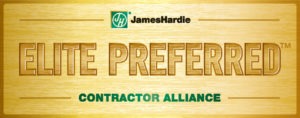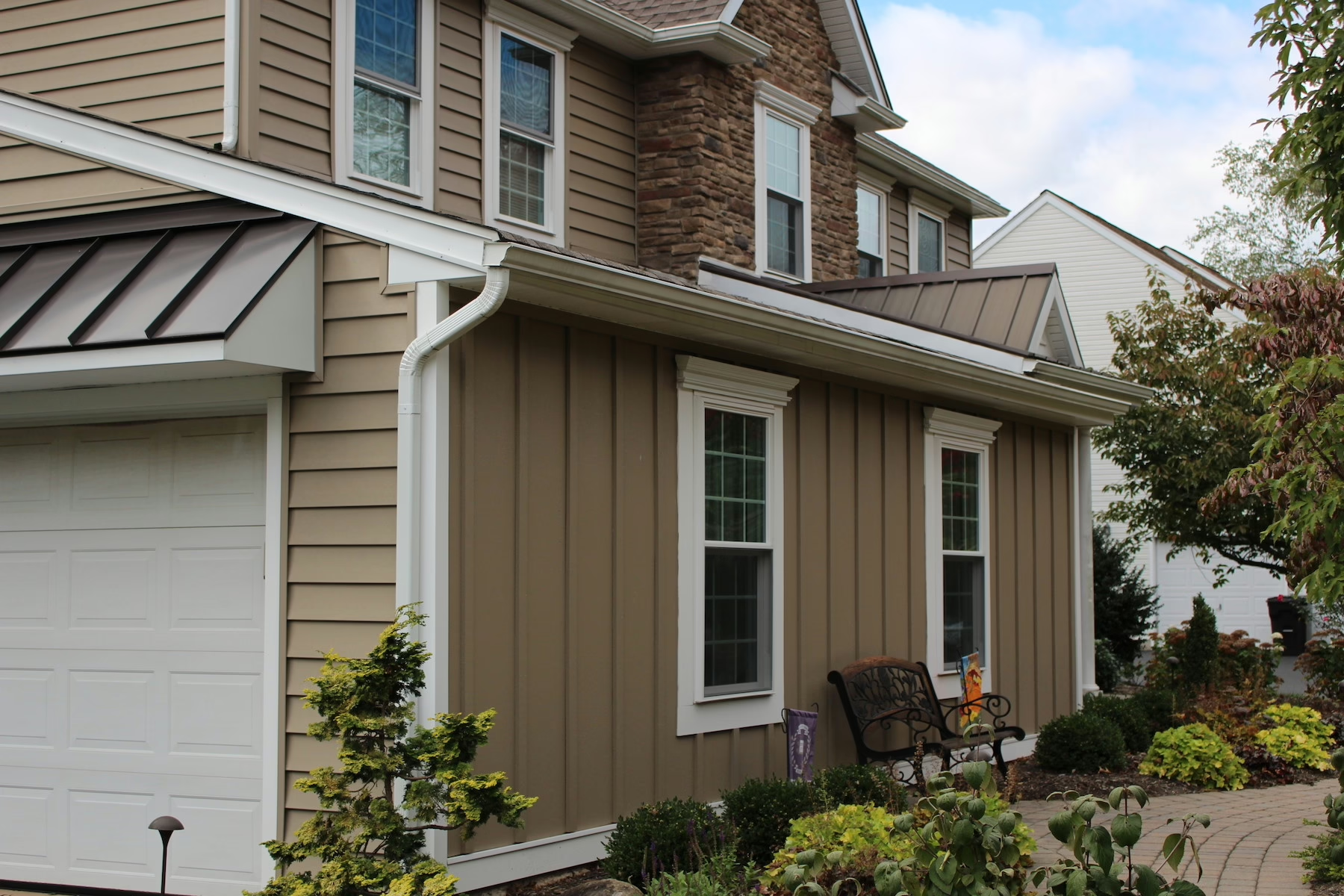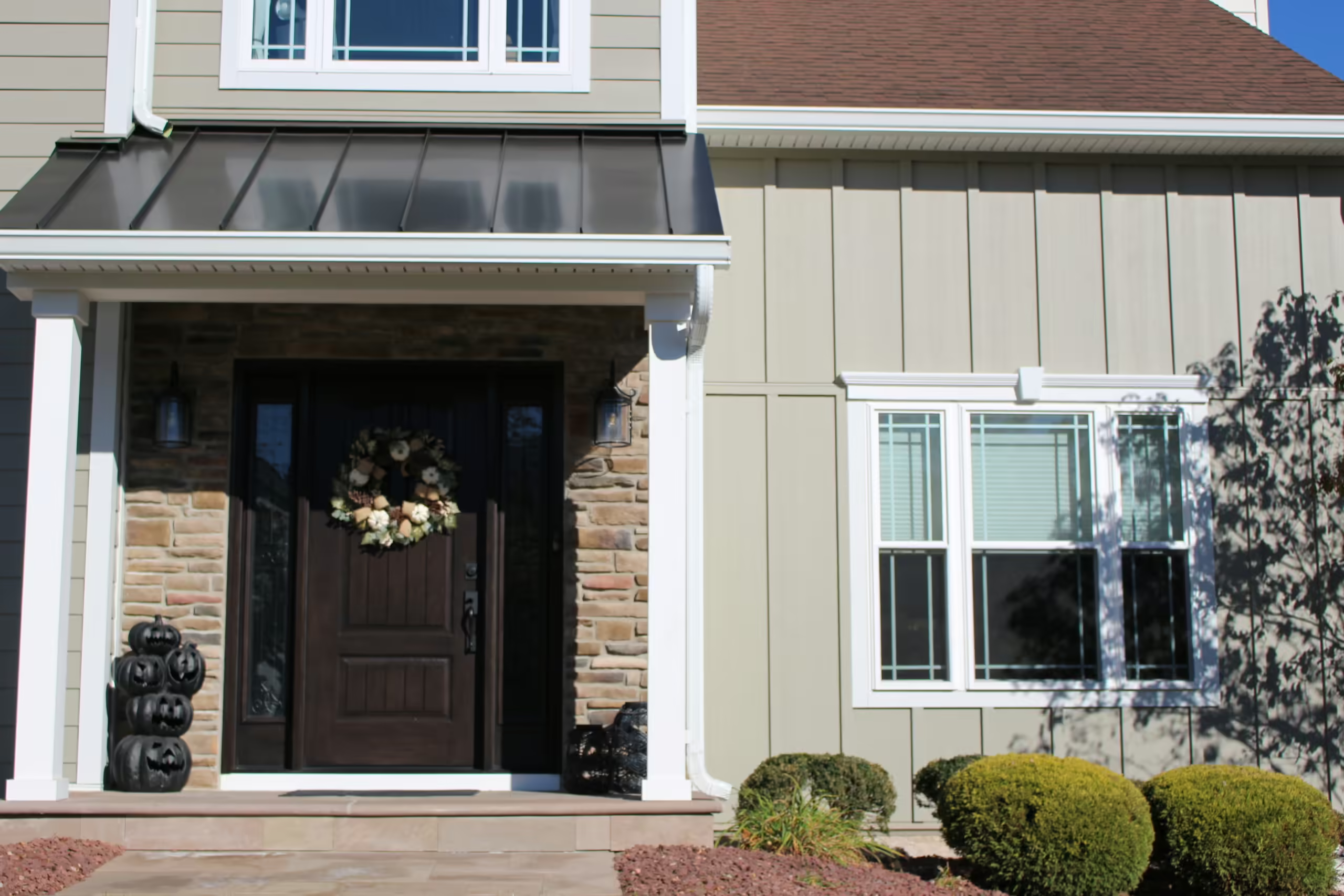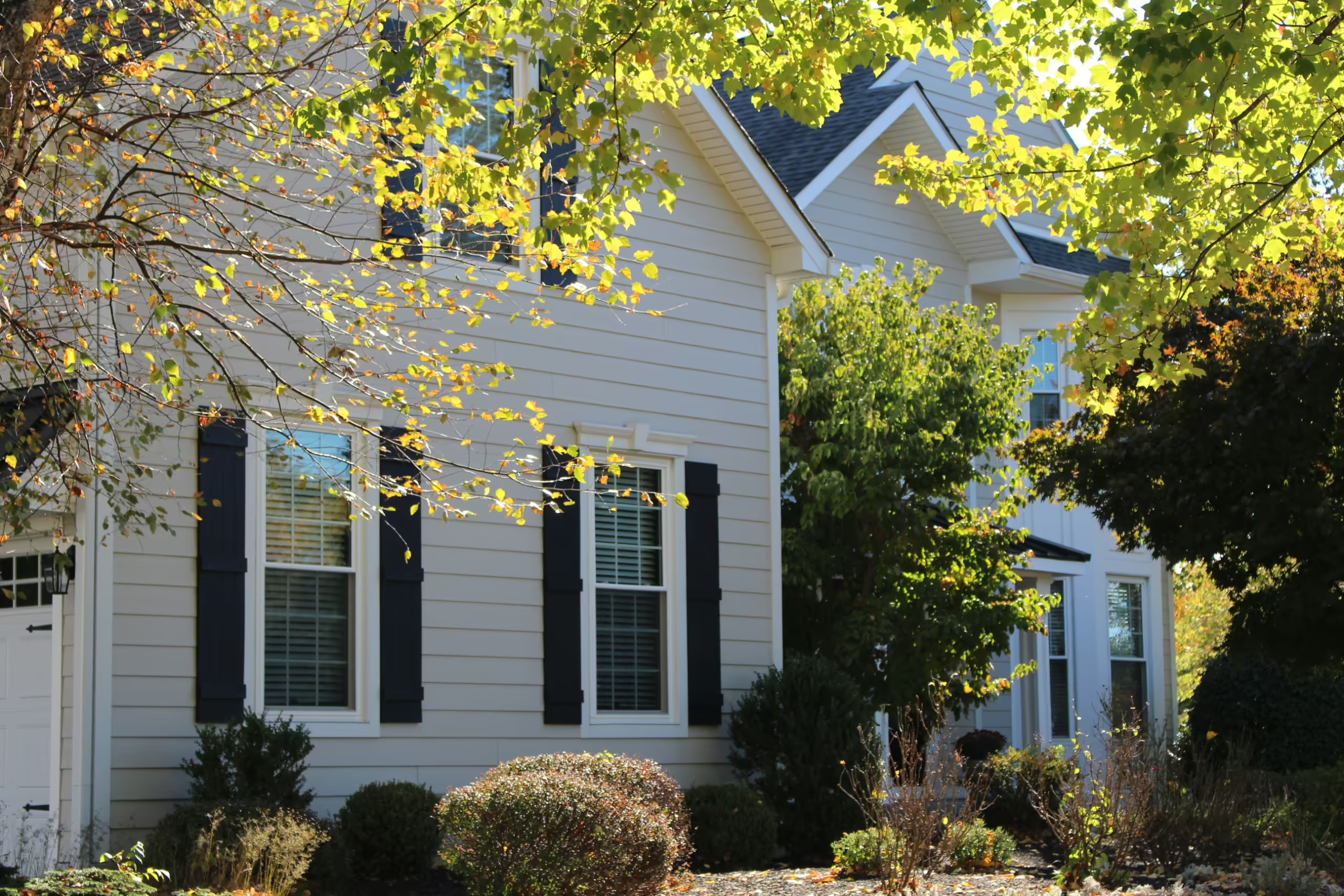Pennsylvania homes have not done well with stucco siding. Incorrect installation of this man-made material caused costly moisture penetration problems, leaving homeowners with the task of repairing their stucco repeatedly and then replacing it. Gaining knowledge about the difference between stucco and a more durable, weather-resistant material—James Hardie fiber cement—will help you create a long-term solution to the stucco dilemma, so you can enjoy the low-maintenance, gorgeous exterior you’ve been dreaming of.
Read on to discover the dramatic differences in these two siding materials.
James Hardie Siding Vs. Stucco
Weather Resistance
- James Hardie – Hardie siding stands up to Pennsylvania weather with ease. The Hardie company engineered their siding to endure the specific weather elements in our region of the country. Their durable HardieZone System ensures their siding will endure Pennsylvania’s year-round precipitation and temperature extremes. Hardie’s HZ5 product line works perfectly in climates with freezing temperatures, extreme seasonal temperature variations, and snow and ice. Its surface is designed for high performance, giving it superior paint adhesion and water resistance. A drip edge was added to provide improved water management. And this durable, weather-resistant material is available in lap, shingle, panel, fascia, trim, and soffits—so your home is well protected.
- Stucco – Since stucco cracks easily, moisture can penetrate it and cause damage. If left unnoticed, the problems can cascade into a heap of expensive trouble for homeowners. Stucco’s absorbent nature allows water to invade it easily. When moisture gets trapped behind stucco, it’s not obvious until the situation has caused significant water damage.
Here are some of the problems that happen when stucco absorbs moisture: When water damage occurs, it discolors the appearance of your stucco and dampens your curb appeal. Wall rot can be hidden behind your stucco, and requires remediation—quickly! Mold issues can pop up when moisture penetrates stucco siding, putting you and your family at risk of health problems. Black mold is serious and should be dealt with promptly.
Durability
It’s important to consider how long your siding will last, and stucco and fiber cement have different lifespans.
- James Hardie – When this durable siding is installed correctly by a reliable contractor, and when homeowners maintain it well, it can last up to 50 years. That means it may be the last siding you ever have to install!
- Stucco – Stucco resists fires and termites, but it doesn’t hold up to the weather. It doesn’t perform well in regions with heavy or frequent precipitation. There is a strong possibility that stucco installed in Pennsylvania will develop cracks. When stress is placed on stucco due to weather-related shrinkage and expansion, cracks develop. Once they form, they grow larger and open the door to damaging moisture.
Warranty
There is a stark difference between James Hardie and stucco when it comes to their warranties.
- James Hardie – The James Hardie company thought of everything when it comes to durable siding. They require that their siding materials be installed by a James Hardie Preferred Contractor who went through the manufacturer’s training so they will install Hardie siding with precision and care. Once your siding is installed by one of these Hardie approved pros, your 30-year non-prorated, transferable warranty will be honored (in the rare case it is needed!). The fact that the Hardie company stands behind their highly researched and carefully engineered products with a 30-year warranty gives homeowners peace of mind should they need anything in the future.
- Stucco – Stucco manufacturers don’t offer warranties on their siding products. This should be a red flag of warning to homeowners considering covering their home in stucco. If you live in a house covered in stucco siding, the expenses, hassles, and time-consuming effort it takes to repair it will be left on you 100%.
Maintenance
Stucco and James Hardie siding differ extremely when it comes to the upkeep required to maintain them.
- James Hardie – This resilient siding requires almost no maintenance because it resists weather, moisture intrusion, pests, fading, and peeling. Simply wash it twice a year with soapy water, a soft nylon brush, and your garden hose. Keep an eye out for the need to replace its caulking now and then. When caulking gets old, simply pick some up at a hardware store and apply it to the joints of your Hardie siding.
- Stucco – Regular inspections are necessary if you have stucco siding because it is so prone to damage from Pennsylvania weather. When stucco is compromised, leaving your home vulnerable to problems, it’s vital that you repair it quickly to prevent more costly trouble over time.
Installation
- James Hardie – When you hire an Elite Preferred James Hardie Contractor (like us!), you can rest confidently that your home is well protected. It’s best to remove old siding—particularly stucco—before installing Hardie siding, but the lasting results make it worth the time invested in doing the job right.
- Stucco – The reason for many of the problems Pennsylvania homeowners have encountered with their stucco siding is the poor installation practices that occurred when it was installed. Stucco installation should include several layers of siding material: asphalt paper, a rain barrier, a layer of mesh, and multiple layers of stucco itself. Flashing should be installed around windows and doors to create a reliable watertight seal. If stucco contractors rush through the installation process, trouble results.
Stucco Remediation Made Easy

Now that you’ve learned the challenges stucco can create, it’s time to invest in a siding material that you can rely on to safeguard your home from moisture penetration. Stucco remediation is made simple when you choose durable, James Hardie fiber cement siding.
At Preferred Home Improvement, integrity and excellence are at the heart of everything we do. Take a moment to learn more about how our siding services can help you solve the stucco dilemma once and for all—or avoid stucco problems altogether!



